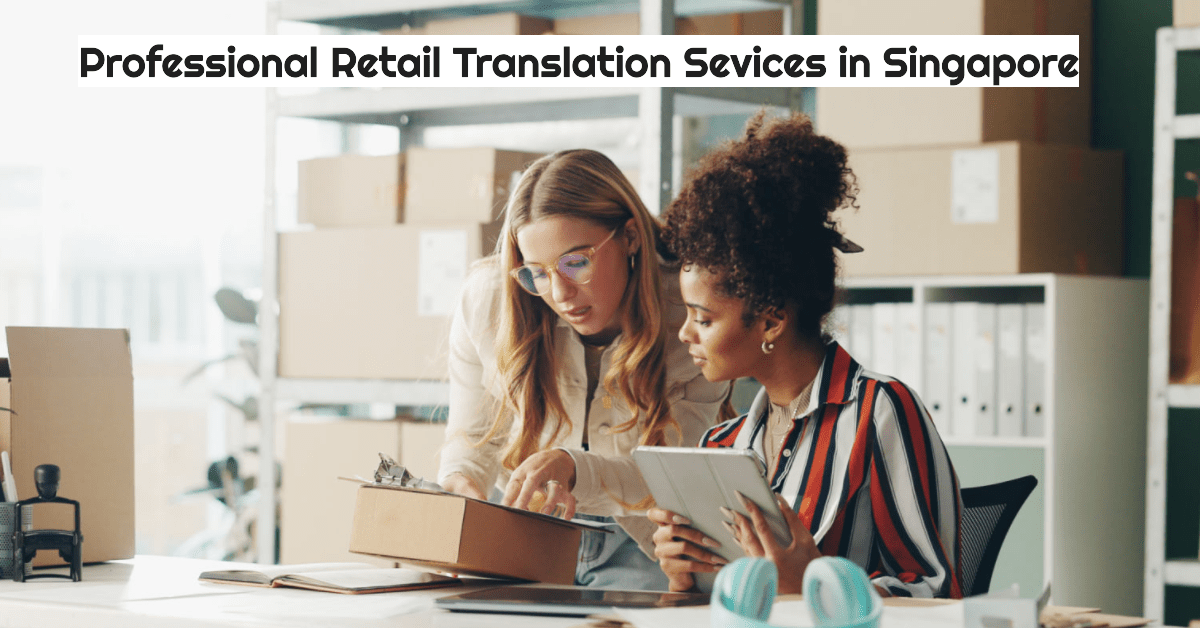High Quality Translation Service Singapore Serves as a Gateway to Help Businesses Expand Overseas
Singapore as a location for international business hub – A confluence of historical and geographical factors?
If you are somewhat familiar with the history of Singapore, then you would surely know that she has been a port and trading centre for numerous centuries.
Businessmen and traders from Arabia, China, India and Persia have been plying their trade as far back as the 13th century and maybe even before that, when Singapore was known as Temasek.
When Singapore became a British colony through the work of Sir Stamford Raffles, she was already a port bustling with commerce.
After that, more and more immigrants arrived from various parts of the world, and today Singapore is truly an international city that welcomes visitors from everywhere.
As you may be aware of, Singapore is famed for being a multi-racial and multi-religious country, where people of different races and religions live together harmoniously and this is an innate advantage that we possess.
In fact, Singapore has four official languages: English, Chinese, Malay and Tamil.
You can see many street names, sign boards and government letters in all these different languages, leading to an extremely rich and diverse language environment.
This is in contrast to mono-racial, mono-cultural and homogeneous societies where the need for different languages and translation services may be much lower.
Singapore can serve as a hub to ASEAN, Asia and even the world.
The benefits of getting your marketing and technical documents translated into various languages to suit niche markets are numerous and cannot be overstated.
Speak to your audience in their native language and the rewards are rich.
Why and what kinds of translation service are typically required
You may be quite curious as to what kind of high quality translation service singapore is commonly required and why.
We have come up with a list of 9 good reasons that will surely shed light on your questions and provide you with useful information:
# 1 Singapore is often chosen to be the Asia-Pacific headquarters of multi-national companies due to its strategic geographical location.
As such, they want to translate their material to languages like Thai, Indonesian, Japanese, Chinese, Korean and Vietnamese, in order to enable these local business operations to grow and prosper.
# 2 The entrepreneurial spirit has been actively encouraged in Singapore recent years.
Budding Singaporean entrepreneurs are eager to establish contact and relationships with foreign business partners to tap on their expertise and enter their markets.
Therefore, these entrepreneurs need to translate their PR material so as to introduce themselves to these potential partners in an efficient and effective way.
# 3 Many expats and foreigners currently work in, or would like to explore job opportunities in Singapore.
In order to do so, they would require certified translation of their personal documents like educational certificates, birth certificates and driving licences.
# 4 Singapore is a global business hub and many conferences, talks and high-level business meetings are held here.
Therefore, clear communication is required to avoid misunderstandings and conflicts.
Since not everyone is fully conversant in English, companies often hire interpreters to act as communication bridges, so that meetings are smooth, fruitful and can be successfully concluded.
# 5 Singapore hosts numerous trade fairs, conventions and exhibitions throughout the year.
These could include food, anime, plants, cars, planes, hotels and just about anything else you can imagine, as long as the demand is there.
In order to promote these activities and attract more locals and foreigners to attend, the translation of marketing material like company brochures and DTP services are critical, because impeccably translated documents and attractive-looking brochures leave an excellent first impression.
# 6 Singapore has always positioned itself as an IT hub, and has championed the use of IT in the workplace in order to improve productivity and efficiency.
With improvement in apps and IT infrastructure, it is now possible to work from home some or even all the time, and this can cut down on travel time and improve work-life balance.
Translation of app –related software and other IT related documents like manuals, procedures and FAQs will certainly attract more local and global users for your newly created apps and IT software, and this investment will definitively pay off in the long term.
# 7 Singapore is a popular travel destination for millions of tourists.
Even though we are currently facing the COVID-19 health crisis and the travel industry is in the doldrums, it is undeniable that Singapore remains a popular travel destination as a survey done by Blackbox Research.
This is regardless of whether they are transit passengers, use Singapore as a base to visit Southeast Asia or fly here specifically to explore the charms of this garden city.
# 8 Moreover, Singaporeans are increasingly well-educated and their disposable income has been increasing in the past decades.
Thus allowing them the possibility to visit other countries to relax while learning from foreign cultures.
It is recommended that operators in the tourism and hospitality industry make use of the current lull period to translate their tourism and marketing related brochures, so as to leverage on the uptick in the tourism industry which will slowly but surely come in the next few months.
# 9 Education has always been one of the main pillars of the Singapore economy.
Famous for being an education and research centre, with an excellent teaching system, state-of-the-art infrastructure and billions poured every year into this evergreen industry.
Both public and private education providers would allocate a budget for translating their course materials, e-learning content, workbooks, online quizzes and other related educational material to gain readers and students from all over the world.
While it is true that this sector is facing increasing competition from other countries, as all industries inevitably will, Singapore is still in a leading position in many areas, and is in a strong and stable position to withstand competition in the foreseeable future.
Endless Business Opportunities via Translation Service
As has been shown above, the population of Singapore is indeed a melting pot where East meets West.
Every race is encouraged to promote its own unique culture and traditions, while accepting, tolerating, understanding and learning from others.
Throughout the years, sound government policies and impressive business structures have led Singapore to become an international city that attracts people from diverse and different backgrounds, adding colour and vibrancy to our society.
Under this context, it is clearly undeniable that the demand for translation services in Singapore is increasing with every passing year
And businesses bound for success will surely understand how essential it is to include translation services of their documents and collateral when expanding their businesses to other parts of the world.
Top 7 Tips for High Quality Translation Services
Using translation services is crucial in global communication as it plays a vital role in ensuring accurate and high-quality translations.
By leveraging translation services, organisations and individuals can bridge language barriers effectively, enabling seamless communication across different cultures and languages.
Improved translation quality enhances mutual understanding by accurately conveying the intended message without distorting its meaning.
This, in turn, reduces the likelihood of miscommunication, misunderstandings, and potential conflicts that may arise due to language barriers.
Henceforth, in this article, we will explore top 7 tips to ensure high quality translation services for a company’s communication to expand their market globally.
expand the paragraph using the pointers with keywords translators
Tip #1 : Clear and Specific Instruction to Translators
When providing briefs to translators, it is crucial to include detailed information to ensure an accurate and effective translation. Start by outlining the target audience, specifying factors such as their demographic characteristics, language proficiency, and cultural background. This will help the translator tailor the language and tone of the translation appropriately.
Next, clearly define the purpose of the translation. Is it meant for informational purposes, marketing materials, legal documents, or any other specific use? Understanding the intended outcome will guide the translator in conveying the message effectively.
Additionally, highlight any specific requirements or preferences you have for the translation. This could include preferred terminology, style guidelines, formatting instructions, or any cultural considerations that need to be taken into account.
By providing comprehensive briefs with these key pointers, translators will be better equipped to produce a high-quality translation that meets your needs and resonates with your target audience.
Tip #2 : Localisation of Content
When localising translations, it’s essential to adapt the text to the local culture, dialect, and terminology of the target audience.
This process involves more than just converting words from one language to another; it requires a deep understanding of the nuances that make language unique in different regions.
By incorporating local slang, expressions, and idioms, translators can create content that resonates with the specific audience, making it feel more authentic and relatable.
Moreover, adjusting for cultural references and sensitivities ensures that the message is not only understood but also accepted within the local community.
In essence, effective localisation goes beyond mere translation; it aims to bridge the gap between languages and cultures, fostering better communication and connection with the intended readers.
Tip #3 : Providing Glossary and Brand Guide to Translators
Developing and up-keeping glossaries and client’s brand guides is essential for establishing a set of preferred terminologies, writing styles, tones, and other guidelines. These resources serve as valuable references that aid in maintaining consistency throughout all translation projects.
By adhering to the guidelines outlined in glossaries and brand guides, translators can ensure that the terminology, style, and tone used in translations remain uniform across various projects. This helps in creating a cohesive and professional output that resonates effectively with the target audience.
The use of glossaries and style guides not only promotes consistency but also help improves to the overall top quality of translations. By following established guidelines, translators can produce accurate, clear, and culturally appropriate content that meets the expectations of clients and readers alike.
Tip #4 : Use of Translation Memory Tools
Translation memory tools are valuable assets for translators as they store previously translated content in a database. This stored information can be retrieved and reused, enabling translators to work efficiently and maintain consistency across various projects.
By utilising these CAT tools, translators can save a significant amount of time that would otherwise be spent on re-translating the same or similar content.
One of the key benefits of using translation memory tools is the ability to ensure that the terminology and phrasing used in translations remain consistent. This consistency is crucial for creating high-quality translations and maintaining the overall coherence of translated materials.
Overall, translation memory tools play a crucial role in enhancing translation productivity, quality, and consistency, ultimately benefiting both translators and the end-users of translated content.
Tip #5 : Conduct Thorough Quality Assurance
When it comes to ensuring the quality of translated content, a robust quality assurance process is essential.
This process typically involves three key components: proofreading, editing, and reviewing by a second linguist.
Each of these steps plays a crucial role in identifying errors, improving clarity, and maintaining consistency to ensure that the translation meets the desired quality standards.
- Proofreading: The first step in the quality assurance process involves carefully examining the translated content to identify and correct any spelling, grammar, or punctuation errors. This ensures that the text is accurate and free of mistakes that could detract from its quality and professionalism.
- Editing: Once the initial proofreading is complete, the text undergoes a more in-depth editing process. This involves reviewing the overall coherence, clarity, and style of the translation to ensure that it effectively conveys the intended message in a natural and engaging manner. Any awkward phrasing, ambiguous wording, or inconsistencies are addressed during this stage to enhance the overall quality and readability of the content.
- Reviewing by a Second Linguist: In the final stage of the quality assurance process, the translated content is reviewed by a second linguist who acts as an independent evaluator. This additional review helps to catch any overlooked errors, confirm the accuracy and consistency of the translation, and provide valuable feedback for further refinement. By involving a second linguist in the review process, it adds an extra layer of assurance that the translation meets the desired quality standards and effectively communicates the intended message to the target audience.
By implementing a comprehensive quality assurance process, organisations can confidently deliver accurate and polished translations that effectively communicate their message to a global audience.
Tip #6 : Gather Feedback, Improve and Iterate
When it comes to enhancing the translation process, soliciting feedback from target audiences, clients, and subject matter experts is invaluable.
By leveraging the insights gained from this feedback, we can pinpoint areas for improvement and fine-tune our translation strategies accordingly.
This iterative approach not only ensures the accuracy and effectiveness of our translations but also enables us to continuously evolve and meet the evolving needs of our diverse audience.
- Soliciting Feedback: It is crucial to actively seek feedback from target audiences, clients, and subject matter experts to gain valuable insights into the effectiveness of the translation process. By engaging with these key stakeholders, we can gather diverse perspectives and identify areas that require improvement.
- Utilizing Feedback: The feedback received should be carefully analysed and used as a blueprint for refining the translation process. This information can highlight specific areas that may need attention, such as clarity, accuracy, tone, or cultural appropriateness. By incorporating this feedback, we can enhance the translation quality assurance of our work and better meet the needs of our audience.
- Continuous Improvement: Feedback should not be viewed as a one-time activity but rather as an ongoing process. By consistently seeking and implementing feedback, we can continually refine our translation strategies and ensure that our work remains relevant and impactful.
- Iterative Approach: Adopting an iterative approach based on feedback allows us to adapt and evolve our translation methods in response to changing requirements and preferences. This iterative cycle of feedback, analysis, and refinement is essential for maintaining high standards and delivering translations that resonate with the intended audience.
Tip #7 : Foster a Continuous Learning Attitude
Encouraging translators to continuously enhance their skills is crucial for their professional development.
Attending training sessions, workshops, or conferences provides them with valuable opportunities to stay abreast of the latest industry best practices and emerging technologies.
By engaging in these learning activities, translators can sharpen their linguistic abilities, deepen their understanding of cultural nuances, and refine their translation techniques.
Moreover, such initiatives enable them to network with fellow professionals, exchange insights, and gain fresh perspectives on the evolving landscape of translation.
Ultimately, this ongoing commitment to learning and growth empowers translators to deliver high-quality translations that meet the diverse needs of clients in today’s dynamic global marketplace.
WhizWordz : Your Trusted Partner for High-Quality Translations
At WhizWordz, we pride ourselves on being a professional translation agency that is dedicated to delivering top-notch translation services by adhering to industry best practices. Our approach is built upon incorporating the following key tips to ensure the highest quality in all our translations:
1. Conduct Thorough Quality Assurance
We understand the importance of a robust quality assurance process. Our team meticulously proofreads, edits, and reviews every translated document to guarantee accuracy, clarity, and consistency. By implementing a comprehensive quality assurance process, we ensure that our translations meet the desired quality standards consistently.
2. Gather Feedback, Improve and Iterate
We actively seek feedback from our clients, target audiences, and subject matter experts. By leveraging this feedback, we continuously refine our translation strategies to enhance the effectiveness and accuracy of our work. This iterative approach allows us to evolve and meet the evolving needs of our diverse audience effectively.
3. Foster a Continuous Learning Attitude
At WhizWordz, we foster a culture of continuous learning amongst our translators. By encouraging them to attend training sessions, workshops, and conferences, we provide them with opportunities to enhance their skills, stay updated on industry best practices, and embrace emerging technologies. This commitment to learning empowers our translators to deliver high-quality translations that exceed client expectations.
With WhizWordz as your translation partner company, you can trust that your content will be translated with precision, clarity, and cultural sensitivity to effectively communicate your message to a global audience. Contact us today for all your professional translation needs!
Frequently Answer and Question Section
Q1. What is translation quality and why is it important?
Translation quality refers to the accuracy and effectiveness of the translated content in maintaining the essence and meaning of the original source text. A high-quality translation is crucial for effectively communicating with the target audience and ensuring localization success.
In order to achieve high-quality translation, various factors such as terminology consistency, proper punctuation, and thorough proofreading are necessary. This demonstrates a commitment to providing professional translation services.
Q2: How to ensure the quality of your translation work?
To maintain the quality of your translation work, it is essential to have a well-defined translation process that includes quality assurance steps. This may involve the use of translation memory, glossaries, and having a dedicated project manager overseeing the translation project. Consistency in terminology and style throughout the translated text is key to achieving quality translation.
Q3:How can you improve the quality of your translations?
There are several ways to improve the quality of your translations. One approach is to engage with translation companies or translation agencies that have a quality assurance process in place. Additionally, utilizing translation software and CAT tools can help enhance the overall quality of translations. Regularly seeking feedback from linguists and subject matter experts can also help in improving the quality of translations.
Q4: What are the best practices for maintaining high-quality translations?
Rigorous Quality Assurance: To instil a rigorous QA process where the translation team carefully checks every translated document for accuracy and consistency. This assists to meet the desired quality standards consistently.
Seek Feedback and Improve:Gather feedback from clients to enhance translation strategies continuously.
Promote Continuous Learning: Encourage translators to participate in training sessions, workshops, and conferences to improve their skills and stay updated on industry practices and technologies. This commitment to learning helps them deliver top-notch translations that exceed client expectations.




